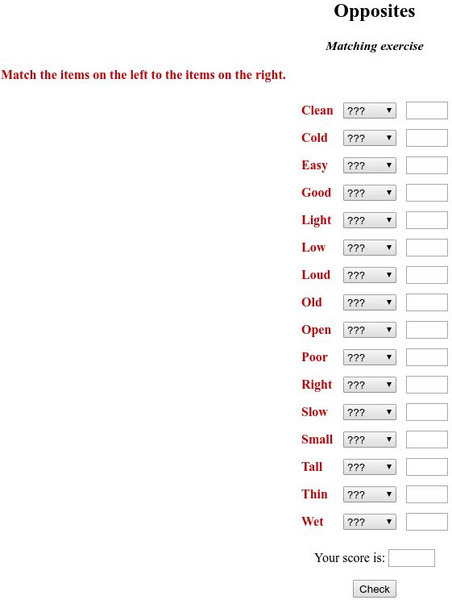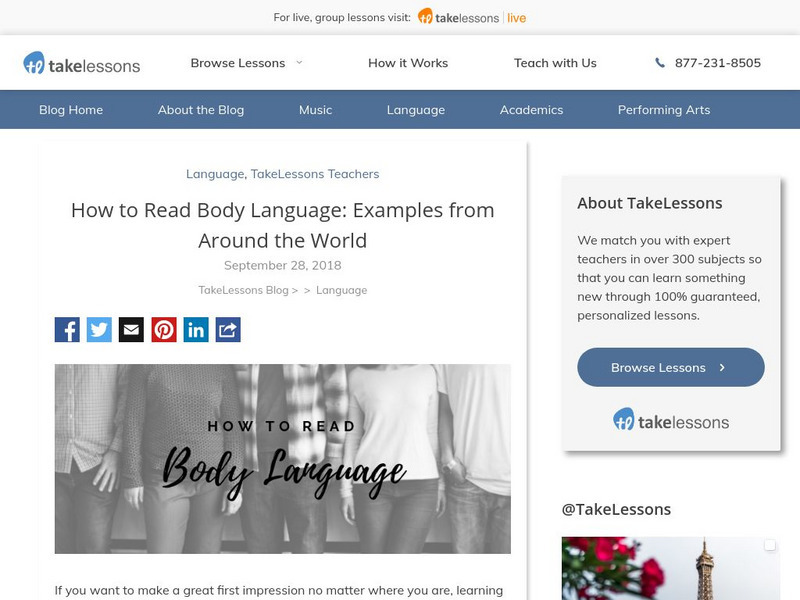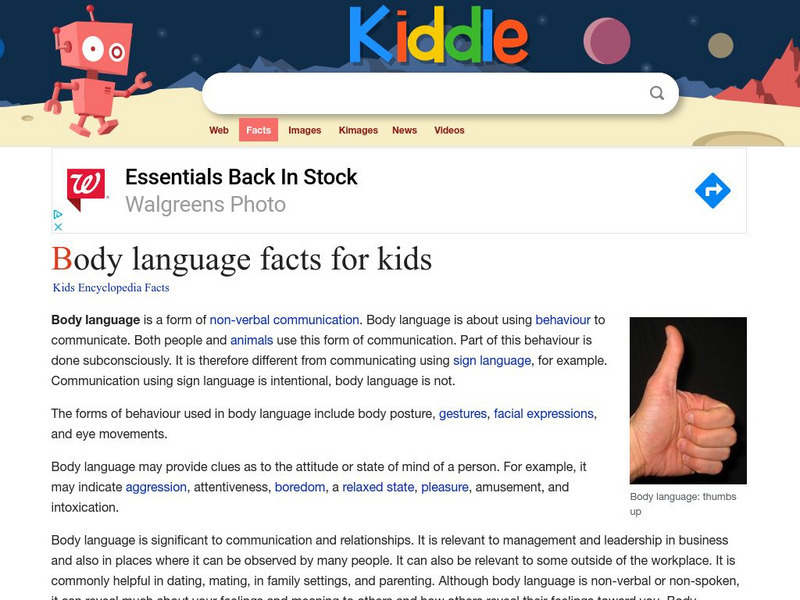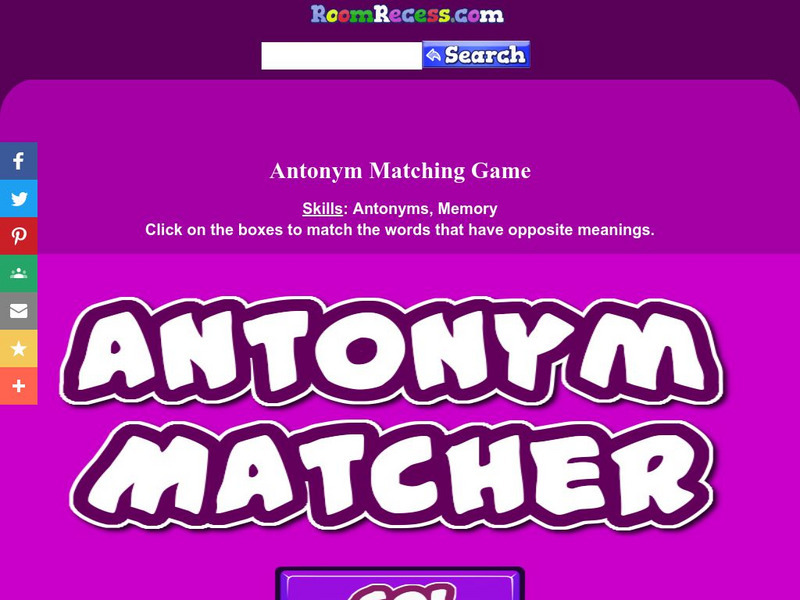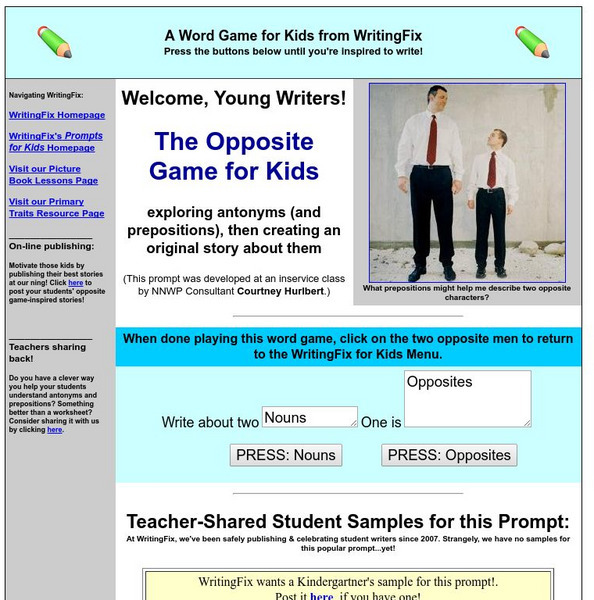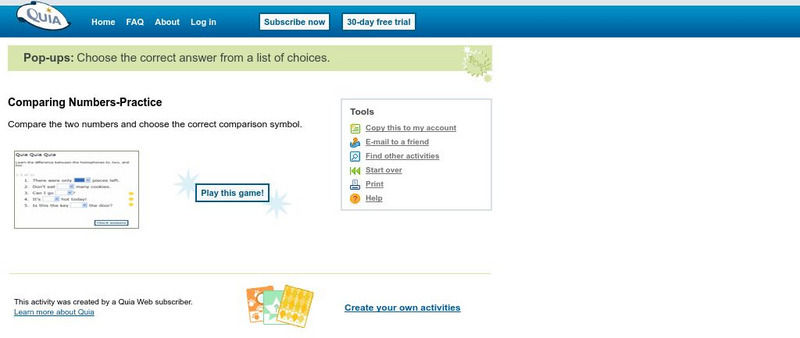Goodwill
Gcf Global: Homophones
Engage in this fun activity to learn all about homophones, which are words that sound alike but that are spelled differently and have different meanings.
Better Lesson
Better Lesson: L.3.5a: Distinguish Literal and Nonliteral Meanings of Words
Links to 18 lessons and activities that build student skills in standard L.3.5a: Distinguish the literal and nonliteral meanings of words and phrases in context (e.g., take steps).
Better Lesson
Better Lesson: L.3.2a: Choose Words and Phrases for Effect
Links to 4 lessons and activities that build student skills in standard L.3.3a: Choose words and phrases for effect.
Scholastic
Scholastic: What's Another Word For? What's the Opposite Of?
Check out these creative ways to teach students about synonyms and antonyms. Features a great list of ideas for teachers to include in their lesson plans.
Fun Brain
Fun Brain: Word Confusion (Choose the Correct Word)
Players choose the word that correctly completes a sentence from a pair of words that are frequently misused or misspelled, such as they're and there, blue and blew, aunt and ant.
Florida Center for Reading Research
Florida Center for Reading Research: Morphemic Elements: Make It Meaningful
A lesson plan in which young scholars sort words based on the meanings of their affixes: before, one who, state or qualify of, and wrongly. Materials are included.
Florida Center for Reading Research
Florida Center for Reading Research: Morphemic Elements: Meaningful Affixes
A lesson plan in which students add affixes to alter the meaning of words. Materials are included.
College Claparede (Switzerland)
English Exercises Online: Antonym
Match these sixteen words with their antonyms.
Alabama Learning Exchange
Alex: Using Vivid Adjectives
This upper elementary lesson plan focuses on the use of vivid adjectives to enhance student writing. Students will explore vivid adjectives in a variety of activities including thesaurus use and story development software.
Alabama Learning Exchange
Alex: Building Word Castles
In this lesson, students will explore unfamiliar words found in various picture books by Patricia Polacco. Students will discover the meanings of unfamiliar words by using a dictionary and find synonyms and antonyms with a thesaurus. The...
PBS
Pbs Learning Media: How to Recognize a Phrase
A phrase is a group of related words that does not include both a subject and a verb. It only has one or the other! [0:39]
PBS
Pbs Learning Media: Some Frequently Confused Words
Some words in English can look and sound similar, but have entirely different meanings. Keep an eye and ear out for them; beware of commonly confused words. [0:40]
Other
Take Lessons: How to Read Body Language: Examples From Around the World
This resource provides several examples of different meanings of various types of body language.
Other
Kiddle Encyclopedia: Body Language Facts for Kids
This resource provide a list of common types of body language. Each type of body language is described.
Other
The Responsive Counselor: Body Language and Tone of Voice Lesson Plan
This blog post from shares several activities that will help students understand how to interpret voice tone and body language.
Louisiana Department of Education
Louisiana Doe: Louisiana Believes: Ela Guidebooks: Semantic Mapping
A strategy for developing learners' vocabulary by representing the concepts of words graphically. This helps refine their understanding of vocabulary to meet expectations in reading and language.
Arcademics
Arcademics: Furious Frogs, Antonyms, Synonyms, Homonyms
Pick the game to play: antonyms, synonyms, homonyms and then quickly click the correct word that is the same or opposite.
Curated OER
Mc Graw Hill: Language: Vocabulary Acquisition: Shades of Meaning: Verbs [Pdf]
Students learn about the differences among action verbs with similar meanings by acting them out with classmates in this fun verb game.
Room Recess
Room Recess: Antonym Matcher
Click on boxes and try to match words that have opposite meanings. Good luck!
Primary Resources
Primary Resources: To Order Words According to Shades of Meaning [Pdf]
This PDF activity has students order lists of words with similar meanings from the weakest to the strongest in meaning, select words with strongest meaning to fill in the blanks, make a list of words that mean happy, and then use them to...
Writing Fix
Writing Fix: A Word Game for Kids: The Opposite Game for Kids
In this word game, young writers explore antonyms (and prepositions), then create an original story about them. For ideas they can click the nouns and opposites buttons until they find a topic they want to write about.
Kidport
Kidport: Antonyms
This site has a five question quiz from Kidport that offers immediate feedback on each question. Elementary pairs of words like cloudy and sunny, good and bad.
Other
Ginger Software: Confusing Words: Meet vs. Meat
Students learn the difference between the words meat and meet.
Quia
Quia: Comparing Numbers
This is a 15-question exercise/assessment for homonyms; students select the correct word from the homonyms in the box that fits the sentence.








